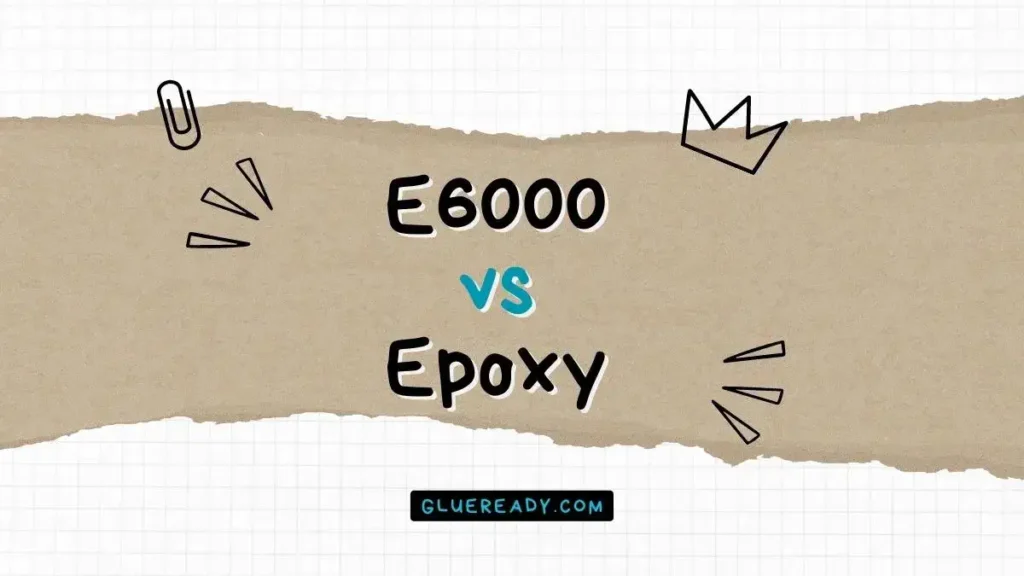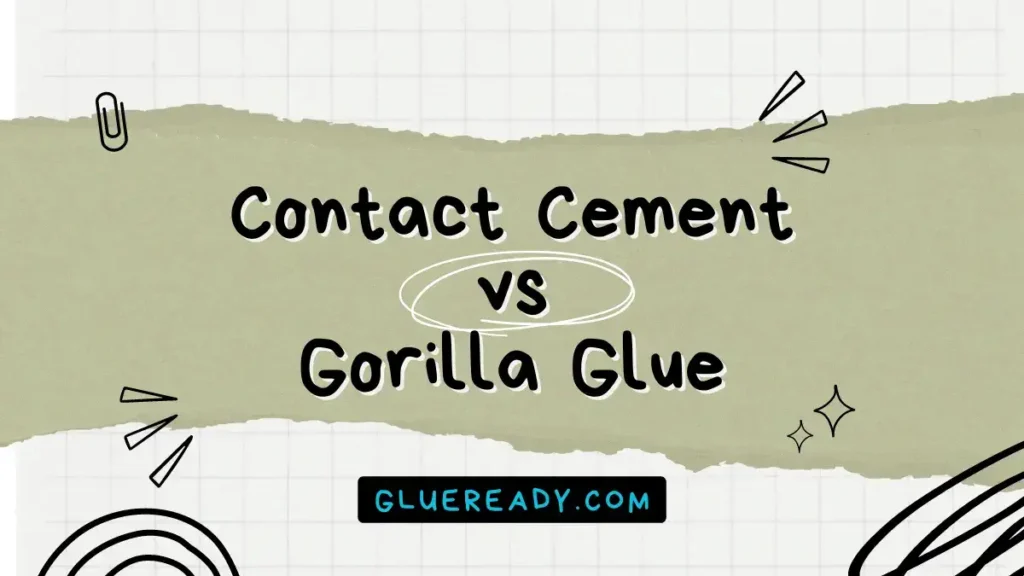Shoe Goo vs Contact Cement

For those working with shoes, leather, rubber, and various materials, two popular options stand out: Shoe Goo and Contact Cement.
Shoe Goo is specifically designed for repairing shoes, while Contact Cement is a more general-purpose adhesive that works best on rubber, leather, plastics, and veneers.
In this article, I will dive into the unique properties of these adhesives by comparing shoe goo vs contact cement and help you decide which one suits your needs best.
Read More: Barge Cement vs Shoe Goo
Shoe Goo: A Flexible Solution for Shoe Repairs
Shoe Goo is specifically designed for repairing and protecting shoes.
Its formulation is tailored to bond seamlessly with a wide range of shoe materials, including leather, rubber, vinyl, and canvas.
This adhesive excels in projects where flexibility and durability are key. It’s perfect for reattaching soles, fixing detached parts, and sealing small cracks or holes.

Whether you’re dealing with sneakers, loafers, or hiking boots, Shoe Goo’s flexibility ensures that your repairs can withstand the demands of everyday wear and movement.
Read More: How to Use Shoe Goo to Repair Your Shoes?
Contact Cement: Instant Bonding Power for Precision Projects
Contact Cement is renowned for its rapid bonding capabilities.
This adhesive creates a strong and permanent bond between two surfaces when they’re pressed together.
It’s a go-to option for projects where quick and precise bonding is essential.
Whether you’re attaching leather elements to a craft project or bonding different materials together, contact cement’s instantaneous grip ensures a secure connection.
However, it’s worth noting that contact cement might not perform as well on materials that require constant bending and flexing.

Shoe Goo vs Contact Cement Comparison Table
| Feature/Property | Shoe Goo | Contact Cement |
| Type of adhesive | Rubber-based | Neoprene-based |
| Consistency | Gel-like | Liquid |
| Drying Time | 24 to 72 hours | 15 to 20 minutes |
| Water Resistance | High | Low |
| Flexibility | High | Low |
| Application Difficulty | Easy | Hard |
| Appropriate Materials | Rubber, leather, canvas, vinyl | Rubber, leather, plastic, veneer |
Comparison Between Shoe Goo and Contact Cement
To help you decide which type of shoe glue is better for your shoe repair needs, let’s compare Shoe Goo and Contact Cement based on some significant factors:
Appropriate Materials
Contact cement works best on rubber, leather, plastics, and veneers when it comes to shoes. It can also be used on other materials like glass or metal.
Shoe Goo is specifically made for repairing shoes and works well with rubber, leather, canvas, or vinyl.
Drying Time
Contact Cement dries faster than Shoe Goo.
It takes about 15 to 20 minutes for Contact Cement to form a bond, while it takes 24 to 72 hours for Shoe Goo to cure completely.
Water Resistance
Shoe Goo is more water-resistant than Contact Cement.
It can seal holes and waterproof your shoes, while contact cement might peel off if exposed to moisture.
Flexibility
Shoe Goo is more flexible than Contact Cement.
It can bend and stretch with your shoes without cracking or breaking, while Contact Cement might become brittle or rigid over time.
Ease of Use
Contact Cement is easier to apply than Shoe Goo.
It has a thin consistency that spreads easily on surfaces, while Shoe Goo has a thick consistency that requires more pressure and smoothing.
However, Contact Cement is more difficult to fix than Shoe Goo.
It forms an instant bond that cannot be repositioned or adjusted, while Shoe Goo gives you some time to fix any mistakes before it dries.
Key Considerations When Choosing Between Shoe Goo and Contact Cement
Material Flexibility
If your project involves materials that need to bend and move, like shoes, Shoe Goo is the superior choice due to its flexibility.
Contact Cement may not be as suitable for such applications.
Bonding Speed
Contact Cement shines in projects that require an immediate and unyielding bond. It’s ideal for projects where time is of the essence and precision is crucial.
Project Type
Consider the nature of your project.
Shoe Goo is tailored for shoe repairs and materials that require durability and flexibility, while Contact Cement is a versatile option for a wide array of crafting and bonding tasks.
Read More: E6000 vs Shoe Goo
Frequently Asked Questions (FAQs)
Can I Use Contact Cement for Shoes?
Yes, you can use contact cement for shoes. For example, you can use contact cement to attach soles to uppers and repair separated layers in shoes.
It works best on materials such as rubber, plastics, veneers, and leather.
Is Shoe Goo Same as Rubber Cement?
No, Shoe Goo and Rubber Cement are not the same. Shoe Goo is an adhesive specifically designed for repairing shoes, while Rubber Cement is a type of adhesive made from elastic polymers.
Shoe Goo contains rubber cement as one of its ingredients, along with other components such as toluene and solvent naphtha.
Is Shoe Goo a Strong Adhesive?
Yes, Shoe Goo is a strong adhesive. It’s the only brand that’s been scientifically formulated to repair, seal, and stick to a wide range of materials related to shoes with superior strength.
With Shoe Goo, you’ll get better adhesion and stronger abrasion resistance to leather, rubber, vinyl, and canvas because of the resin system.
It is the most versatile and effective adhesive available for shoe repair.
Final Thoughts
In the Shoe Goo vs Contact Cement showdown, the winner depends on your specific project requirements.
If you’re repairing shoes or working with flexible materials, Shoe Goo’s flexibility and durability are unbeatable.
On the other hand, Contact Cement’s rapid bonding ability and versatility make it a fantastic choice for precision projects that demand an instant and reliable connection.






